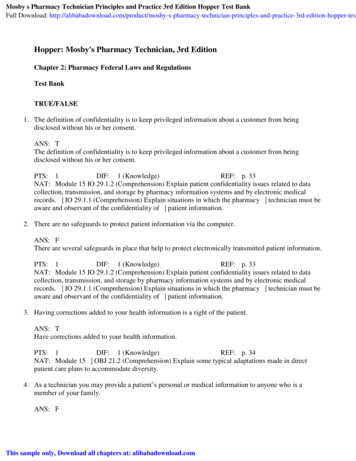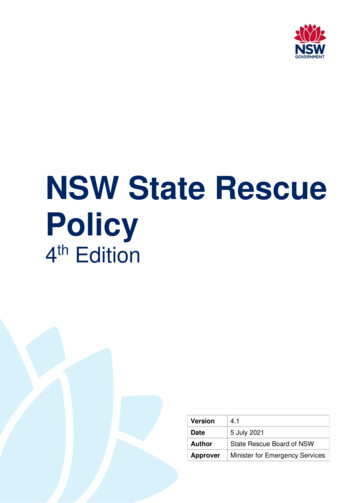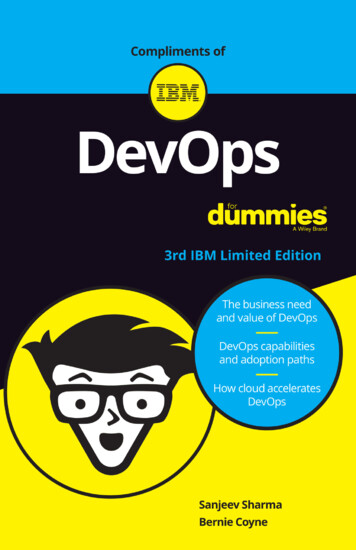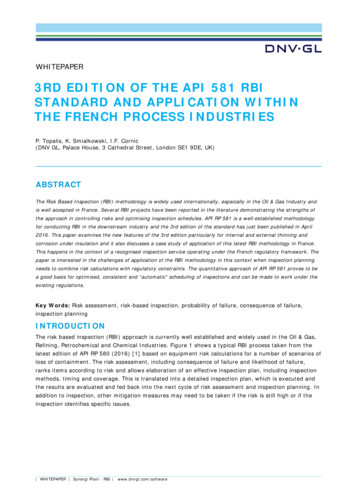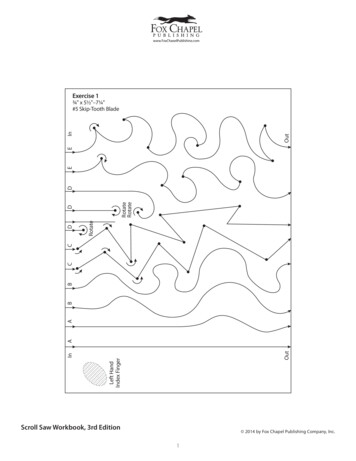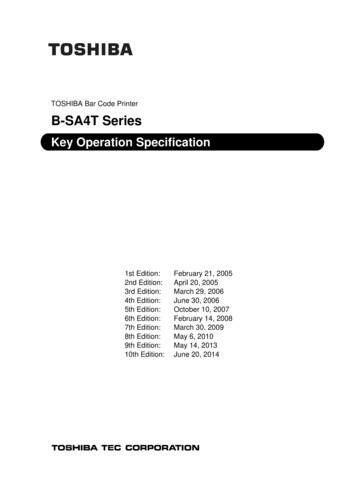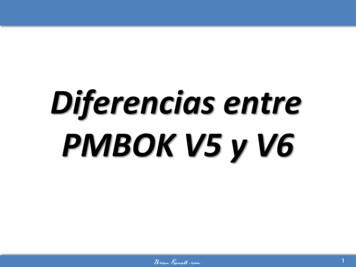
Transcription
Continue
Reflect and relate 3rd edition free pdf downloadShowing 1-30 Start your review of Reflect & Relate: An Introduction to Interpersonal Communication May 19, 2019 Amanda rated it really liked it · review of another edition I enjoyed this textbook, I mean I actually enjoyed this textbook. I didn't skim it. I read it. I took interpersonal communication online this semester because I wanted an easycommunication/speech requirement. This textbook was one of the required readings and throughout it there was relevant information, it appealed to a younger audience, and it gave information thuroughly without feeling like you have to have a masters in communication to understand it. I for sure would recommend this for a I enjoyed this textbook, Imean I actually enjoyed this textbook. I didn't skim it. I read it. I took interpersonal communication online this semester because I wanted an easy communication/speech requirement. This textbook was one of the required readings and throughout it there was relevant information, it appealed to a younger audience, and it gave informationthuroughly without feeling like you have to have a masters in communication to understand it. I for sure would recommend this for a classroom reading. .more May 15, 2019 Jessie rated it really liked it · review of another edition As far as textbooks go I found reflect and relate to be very informative, relevant, and interesting. Communication Theorymight not be on top of everyone's reading list but if you have to read it for school then this is a good book to learn from. As far as textbooks go I found reflect and relate to be very informative, relevant, and interesting. Communication Theory might not be on top of everyone's reading list but if you have to read it for school then this is a good book tolearn from. .more Jun 23, 2013 Chadwick rated it it was amazing · review of another edition As a former student and now current teacher of communication classes, I can attest to the quality of Steve's works. Everything related to his teachings, including these books, are top quality. I can even attest that his 3rd edition will continue the excellencethat started with his first edition. As a former student and now current teacher of communication classes, I can attest to the quality of Steve's works. Everything related to his teachings, including these books, are top quality. I can even attest that his 3rd edition will continue the excellence that started with his first edition. .more Tylor Handy rated itreally liked it Nov 04, 2012 Shauna rated it liked it Aug 17, 2016 Michelle rated it it was amazing Oct 02, 2016 Ryan rated it really liked it May 21, 2016 Vince Graves rated it really liked it Feb 24, 2013 Andie rated it it was amazing Apr 28, 2019 Amy rated it really liked it Aug 01, 2014 Tymory rated it liked it Sep 10, 2012 Loona rated it really liked itMay 06, 2021 Holly rated it it was amazing Dec 21, 2013 Bonnie rated it it was ok Sep 29, 2018 Roselle rated it really liked it Aug 25, 2015 Danielle Dardi rated it did not like it May 01, 2019 Jessica rated it really liked it Nov 06, 2021 Emilie rated it liked it Jan 16, 2014 Skip to content Home / PDF Textbooks Reflect & Relate: An Introduction toInterpersonal Communication 4th Edition. The book is PDF Version and can be downloaded immediately to any kind of devices. Guarantee 100% money back if the book is not as described. ISBN-10: {1457697181}; ISBN-13: {978-1457697180 } 1996-2014, Amazon.com, Inc. or its affiliates Home / Test Bank / Reflect and Relate An Introduction toInterpersonal Communication 3rd Edition McCornack Test Bank 28.50 Download SampleReflect and Relate An Introduction to Interpersonal Communication 3rd Edition McCornack Test Bank. Digital Item: This item is INSTANT DOWNLOAD, No Waiting time, No Delay for any reason. This is NOT the TEXT BOOK. You are buying TEST BANK forReflect and Relate An Introduction to Interpersonal Communication 3rd Edition by McCornack. Test Bank comes in a PDF or Word format and available for download only. Reflect and Relate An Introduction to Interpersonal Communication 3rd Edition McCornack McCornack Test Bank with answers of this Test Bank with answer keys for the testsquestion only NO Solutions for Textbook's Question for the Text book included on this purchase. If you want the Solutions Manual please search on the search box. All orders are placed anonymously. Your purchase details will be hidden according to our website privacy and be deleted automatically. Table of contents : CoverTitle PageCopyrightPagePrefaceBrief ContentsContentsFrom the ReviewersAbout the Author1. Introducing Interpersonal Communication What Is Communication? Defining Communication Understanding Communication Models What Is Interpersonal Communication? Defining Interpersonal Communication Principles of Interpersonal Communication Motives forInterpersonal Communication Research in Interpersonal Communication What Is Interpersonal Communication Competence? Understanding Competence Self-Quiz: Test Your Self-Monitoring Improving Your Competence Online Issues in Interpersonal Communication Culture Gender and Sexual Orientation Focus on Culture: Intercultural CompetenceOnline Communication The Dark Side of Interpersonal Relationships Making Relationship Choices: Dealing with a Difficult Friend The Journey Ahead Chapter Review2. Considering Self The Components of Self Self-Awareness Self-Concept Self-Quiz: Test Your Self-Concept Clarity Self-Esteem Focus on Culture: How Does the Media Shape Your SelfEsteem? The Sources of Self Gender and Self Family and Self Culture and Self Presenting Your Self Maintaining Your Public Self The Importance of Online Self-Presentation Improving Your Online Self-Presentation The Relational Self Opening Your Self to Others Your Hidden and Revealed Self Disclosing Your Self to Others Improving Your SelfMaking Relationship Choices: Workplace Self-Disclosure Chapter Review3. Perceiving Others Perception as a Process Selecting Information Organizing the Information You’ve Selected Interpreting the Information Reducing Uncertainty Influences on Perception Perception and Culture Perception and Gender Focus on Culture: Perceiving RacePerception and Personality Forming Impressions of Others Constructing Gestalts Calculating Algebraic Impressions Using Stereotypes Improving Your Perception of Others Offering Empathy Self-Quiz: Test Your Empathy Checking Your Perception Practicing Responsible Perception Making Relationship Choices: Balancing Impressions and EmpathyChapter Review4. Experiencing and Expressing Emotions The Nature of Emotion Defining Emotion Feelings and Moods Types of Emotions Focus on Culture: Happiness Across Cultures Forces Shaping Emotion Personality Gender Managing Your Emotional Experience and Expression Emotional Intelligence Managing Your Emotions After they OccurPreventing Emotions Reappraising Your Emotions Emotional Challenges Anger Self-Quiz: Test Your Chronic Hostility Online Communication and Empathy Deficits Passion Grief Living a Happy Emotional Life Making Relationship Choices: Managing Anger and Providing Support Chapter Review5. Understanding Culture What Is Culture? CultureDefined Co-Cultures Focus on Culture: Millennials and Technology Prejudice Cultural Influences on Communication Individualism versus Collectivism Uncertainty Avoidance Power Distance High and Low Context Emotion Displays Masculinity versus Femininity Views of Time Creating Intercultural Competence World-Mindedness AttributionalComplexity Communication Accommodation Self-Quiz: Are You World-Minded or Ethnocentric? Embracing Difference Making Relationship Choices: Parent-Child Culture Clash Chapter Review6. Listening Actively Listening: A Five-Step Process Receiving Attending Self-Quiz: Multitasking and Attention Understanding Responding Recalling The FiveFunctions of Listening Listening to Comprehend Listening to Discern Listening to Analyze Listening to Appreciate Listening to Support Adapting Your Listening Purpose Understanding Listening Styles Four Listening Styles Gender Differences in Listening Styles Focus on Culture: Men Just Don’t Listen! Culture and Listening Styles PreventingIncompetent Listening Selective Listening Eavesdropping Pseudo-Listening Aggressive Listening Narcissistic Listening The Gift of Active Listening Making Relationship Choices: Listening When You Don’t Want To Chapter Review7. Communicating Verbally Characteristics of Verbal Communication Languageis Symbolic Languageis Governed by RulesLanguageis Flexible Languageis Cultural Language Evolves Functions of Verbal Communication Sharing Meaning Shaping Thought Naming Focus on Culture: Challenging Traditional Gender Labels Performing Actions Crafting Conversations Managing Relationships Cooperative Verbal Communication Understandable Messages Using “I” LanguageUsing “We” Language Gender and Cooperative Verbal Communication Barriers to Cooperative Verbal Communication Verbal Aggression Deception Self-Quiz: Test Your Deception Acceptance Defensive Communication Communication Apprehension The Power of Verbal Communication Making Relationship Choices: Dealing with Difficult TruthsChapter Review8. Communicating Nonverbally Principles of Nonverbal Communication Nonverbal Communication Uses Multiple Channels Nonverbal Communicationis More Ambiguous Nonverbal Communicationhas Fewer Rules Nonverbal Communicationhas More Meaning Nonverbal Communicationis Influenced by Culture NonverbalCommunicationis Influenced by Gender Nonverbal Communicationis Liberated Through Technology Nonverbal and Verbal Combine to Create Communication Nonverbal Communication Codes Communicating Through Body Movements Communicating Through Voice Communicating Through Touch Focus on Culture: Touch and DistanceCommunicating Through Personal Space Communicating Through Physical Appearance Communicating Through Objects Communicating Through the Environment Functions of Nonverbal Communication Expressing Emotion Conveying Meanings Presenting Self Managing Interactions Defining Relationships Self-Quiz: Test Your Nonverbal DominanceKnowledge Competently Managing Your Nonverbal Communication Making Relationship Choices: Dealing with Mixed Messages Chapter Review9. Managing Conflict and Power Conflict and Interpersonal Communication Whatis Conflict? Conflict in Relationships Power and Conflict Power’s Defining Characteristics Power Currencies Power andGender Power and Culture Handling Conflict Approaches to Handling Conflict Gender and Handling Conflict Culture and Handling Conflict Focus on Culture: Accommodation and Radical Pacifism Technology and Handling Conflict Conflict Endings Short-Term Conflict Resolutions Long-Term Conflict Outcomes Challenges to Handling Conflict SelfEnhancing Thoughts Destructive Messages Self-Quiz: Test Your Understanding of Destructive Thoughts Serial Arguments Physical Violence Unsolvable Disputes Managing Conflict and Power Making Relationship Choices: Dealing with Family Conflict Chapter Review10. Relationships with Romantic Partners Defining Romantic Relationships Likingand Loving Different Types of Romantic Love Key Elements of Romantic Relationships Romantic Attraction Proximity Physical Attractiveness Similarity Reciprocal Liking Resources Technology and Romantic Attraction Relationship Development and Deterioration Coming Together Coming Apart Maintaining Romantic Relationships MaintenanceStrategies Maintaining Romance across Distance Deciding Whether to Maintain The Dark Side of Romantic Relationships Betrayal Self-Quiz: How Often Do You Betray Romantic Partners? Jealousy Focus on Culture: Infidelity Internationally Relational Intrusion Dating Violence The Hard Work of Successful Love Making Relationship Choices:Managing Jealousy about a Partner’s Ex Chapter Review11. Relationships with Family Members Defining Family Defining Characteristics of Family Types of Families Family Stories Communicating in Families Communication Dimensions Family Communication Patterns Maintaining Family Relationships Maintenance Strategies for FamiliesTechnology and Family Maintenance Dealing with Family Dialectics Focus on Culture: Autonomy and Class: Helicopter Parents Family Relationship Challenges Stepfamily Transition Parental Favoritism Self-Quiz: How Much Family Favoritism Exists? Interparental Conflict The Primacy of Family Making Relationship Choices: Struggling with FamilyTransitions Chapter Review12. Relationships with Friends The Nature of Friendship Friendship Defined Friendship Functions Friendship Across the Life Span Friendship, Culture, and Gender Friendship and Technology Types of Friendships Best Friends Cross-Category Friendships Focus on Culture: Cross-Orientation Male Friendships MaintainingFriendships Following Friendship Rules Maintenance Strategies for Friends Friendship Challenges Betrayal Geographic Separation Self-Quiz: Friendship Distance-Durability Attraction: Romance and FWB Relationships The Importance of Friends Making Relationship Choices: Choosing between Friends Chapter ReviewAppendix: Relationships in theWorkplace The Nature of Workplace Relationships The Culture of the Workplace Networks in the Workplace Organizational Climates Technology in the Workplace Peer Relationships Types of Peer Relationships Maintaining Peer Relationships Mixed-Status Relationships Managing Up Communicating with Subordinates Focus on Culture: The ModelMinority Myth Maintaining Mixed-Status Relationships Challenges to Workplace Relationships Workplace Bullying Workplace Romances Sexual Harassment Workplace Relationships and Human Happiness ReviewGlossaryReferencesName IndexSubject IndexBack Cover Citation preview McCornack Explore interpersonal communication from everyangle. Where Students Learn Digital tools for Reflect & Relate, Fourth Edition, are available in LaunchPad, our dynamic platform that hosts a curated collection of videos, including the new Making Relationship Choices videos. LaunchPad for Reflect & Relate also contains quizzes, the full e-book, the ability to upload and embed video, andLearningCurve –– an adaptive quizzing program that is intuitive and easy to use. See the inside back cover to learn more. an introduction to interpersonal communication FOURTH EDITION BEDFORD ST. MARTIN’S macmillanhighered.com & Relate FOURTH EDITION For more information, visit: macmillanhighered.com/reflectrelate/catalog Coverimages: Tetra Images/Getty Images, Hemera Technologies/Getty Images The new edition is better than ever with new examples, cutting-edge scholarship, a dynamic new video program, and even more coverage of culture with a full chapter on the topic. Reflect & Relate Reflect & Relate represents the finest new and classic scholarship in thefield of interpersonal communication. It teaches students how to systematically reason through interpersonal challenges, reflect on their communication, and develop skills for better relationships. Reflect Steven McCornack mech McCornackR&R4e SE 081115 Making Relationship Choices videos take communication to the next level The MakingRelationship Choices feature has been expanded to include new, professionally shot videos of challenging interpersonal situations and self-assessment questions on LaunchPad, making the experience even more engaging. Now you’ll be able to: Read the Making Relationship Choices background in the text or e-book. React to the situation. Watcha video called “The Other Side,” which shows an alternative point of view. Consider that there are two sides to every encounter. Reevaluate your initial response through self-assessment questions. Build a deeper sense of empathy and understanding. How would you react to your best friend who’s been making some questionable choices andposting about it on Facebook? What’s the deal with the guy in your study group who’s always late to meetings and doesn’t seem to take the group seriously? Your cousin Britney cra crashed her car and dropped out of college . dr Ugh. Ug Things have been tense between you te and your brother since your an grandmother died—and now gr he’s noteven speaking to you. he You’ve never been that close with your dad, but things got worse last weekend. Your friend Karina is back from the Peace Corps, but she’s not the same. Making Relationship Choices by chapter Chapter 1: Introducing Interpersonal Communication: Kaitlyn’s story Chapter 2: Considering Self: Jonathan’s story Chapter 3:Perceiving Others: Dylan’s story Chapter 4: Experiencing and Expressing Emotions: Sam’s story Chapter 5: Understanding Culture: Mom’s story Chapter 6: Listening Actively: Ana’s story Chapter 7: Communicating Verbally: Britney’s story 01 MCC 9718 FM i xxxviii.indd i Chapter 8: Communicating Nonverbally: Dakota’s story Chapter 9: ManagingConflict and Power: Devdas’s story Chapter 10: Relationships with Romantic Partners: Javi’s story Chapter 11: Relationships with Family Members: Dad’s story Chapter 12: Relationships with Friends: Karina’s story 25/09/15 12:12 PM this page left intentionally blank 00 MCC 0461 FM ppi-xxxix.indd iv 09/09/15 6:32 PM Reflect Relate anintroduction to interpersonal communication 01 MCC 9718 FM i xxxviii.indd iii 25/09/15 12:13 PM 01 MCC 9718 FM i xxxviii.indd iv 25/09/15 12:13 PM ’s ion or it ct Ed ru st ed In tat no An Reflect Relate an introduction to interpersonal communication FOURTH EDITION Steven McCornack The University of Alabama at Birmingham Instructor’sAnnotations by Alicia Alexander Southern Illinois University Edwardsville Bedford/St. Martin’s A Macmillan Education Imprint Boston 01 MCC 9718 FM i xxxviii.indd v New York 25/09/15 12:13 PM For Bedford/St. Martin’s Vice President, Editorial, Macmillan Higher Education Humanities: Edwin Hill Publisher for Communication: Erika GutierrezDevelopment Manager: Susan McLaughlin Senior Developmental Editor: Lorraina Morrison Project Editor: Won McIntosh Production Manager: Joe Ford Marketing Manager: Kayti Corfield Editorial Assistant: Will Stonefield Director of Rights and Permissions: Hilary Newman Senior Art Director: Anna Palchik Text Design: Jerilyn Bockorick CoverDesign: John Callahan Cover Images: Tetra Images/Getty Images; Hemera Technologies/Getty Images Composition: Cenveo Publisher Services Printing and Binding: RR Donnelley and Sons Copyright 2016, 2013, 2010, 2007 by Bedford/St. Martin’s All rights reserved. No part of this book may be reproduced, stored in a retrieval system, ortransmitted in any form or by any means, electronic, mechanical, photocopying, recording, or otherwise, except as may be expressly permitted by the applicable copyright statutes or in writing by the Publisher. Manufactured in the United States of America. 0 9 8 7 6 5 f e d c b a For information, write: Bedford/St. Martin’s, 75 Arlington Street,Boston, MA 02116 (617-399-4000) ISBN 978-1-4576-9718-0 (Student Edition) ISBN 978-1-319-01967-9 (Loose-leaf Edition) ISBN 978-1-4576-9719-7 (Instructor’s Annotated Edition) Acknowledgments Test Your Self-Monitoring, p. 23 Mark Snyder, adapted from “Self-monitoring of expressive behavior,” Journal of Personality and Social Psychology,1974, Volume 30, Issue 4 (Oct). Copyright 1974 by the American Psychological Association. Used by permission of the American Psychological Association. Credo of the National Communication Association, p. 24 The Credo of the National Communication Association. Reprinted with permission of the National Communication Association. The BigFive Personality Traits (OCEAN), p. 84 O. P. John and Sanjay Srivastava, from The Big-Five Trait Taxonomy: History, Measurement, and Theoretical Perspectives. Reprinted by permission of Dr. Oliver P. John. Making You Noise, p. 339 Francesca Bell, “Making You Noise.” First appeared in Nimrod. Copyright Francesca Bell. Used by permission ofthe author. Art acknowledgments and copyrights appear on the same page as the art selections they cover. It is a violation of the law to reproduce these selections by any means whatsoever without the written permission of the copyright holder. At the time of publication, all Internet URLs published in this text were found to accurately link to theirintended Web site. If you do find a broken link, please forward the information to will.stonefi[email protected] so that it can be corrected for the next printing. 01 MCC 9718 FM i xxxviii.indd vi 25/09/15 12:13 PM of interpersonal communication is the chance to connect with an array of interesting, complicated, and diverse people. Each term, a newwindow of contact opens. As we peer through it on that first day, we see the faces of those who will comprise our class. They are strangers to us at that moment—an enigmatic group distinguished only by visible differences in skin, hair, and mode of dress. But over the weeks that follow, they become individuated people. We learn the names thatsymbolize their now-familiar faces, as well as their unique cultural identities: the intersection of ethnicity, gender identity, sexual orientation, religion, nationality, age, and economic background that comprises each of them. And because it’s an interpersonal class, we also learn their stories: the tragedies that linger in sadness etched upon theirbrows; the aspirations that urge them to lean forward in knowledge-anticipation. Then the term ends, the window closes, and the shade is drawn. All that remains are the afterimages imprinted on the retina of our memories: Alex, who came out of the closet—but only to you; Sonia, who struggled to surmount stereotypes of her Pakistani ancestry;Lourdes, who, as the first in her family to attend college, brought to your class all the hopes and dreams of multiple generations. This seemingly limitless breadth of cultural variation should evoke a sense of unbridgeable distance. But instead, these people whom we come to call our students share a common bond that serves to connect them: they allwant to improve their relationships. They bring to our classes romantic heartbreaks, battles with family members, and betrayals of friends; and they look to us to give them practical, relevant knowledge that will empower them to choose wisely in dealing with these challenges. The skills and knowledge that we provide transform their lives in powerful,constructive ways. The legacy of such impact is found in their e-mails and Facebook messages to us months, and even years, later: “I just wanted you to know that your class changed my life.” It is this combination of cultural diversity, commonality in goals and concerns, and potential for transformative impact that compelled me to write Reflect &Relate, Fourth Edition. But to understand the fourth edition, you need to know the backstory of the editions that precede it. When I wrote the first edition of Reflect & Relate, I wanted to provide my fellow teachers and their students with a textbook that was welcoming, friendly, personal, trustworthy, and practical— a book that was rock solid incontent, represented the finest of new and classic scholarship in our discipline, and provided a clear sense of the field as a domain of scientific endeavor, not just “common sense.” I also wanted a book that didn’t read like a typical textbook but was so engaging that students might read through entire chapters before they realized they had done so.And, of course, my core mission: a book that didn’t just tell students what to do but taught students how to systematically reason through interpersonal communication challenges. Students could walk away from reading it knowing how to solve their own preface O ne of the greatest blessings we all experience as teachers vii01 MCC 9718 FM i xxxviii.indd vii 25/09/15 12:13 PM viii Preface problems and flexibly adapt to dynamic changes in contexts and relationships. I also had a very particular view of how I wanted to treat culture. Given that cultural variation permeates nearly every aspect of our interpersonal lives, I wanted to have cultural content integratedseamlessly throughout the text, rather than sequestered into a single chapter. As the years have gone by, however, I’ve come to realize that coverage of culture within the book should reflect our (and our students’) true experience of culture. Culture isn’t just broadly disseminated across our daily lives; culture runs deep. Our cultural backgroundsplay a fundamental role in shaping our perceptions, our emotions, our communication, and our relationships. This idea of “culture broad and deep” served as the guiding metaphor for my revision: cover cultural applications across all chapters, but also have a chapter devoted to deeply exploring culture. The single biggest change returning users willfind in this edition is the inclusion of a new culture chapter, where they’ll find classic and new scholarship related to the impact of cultural difference on interpersonal communication and relationships, including coverage of collectivism and individualism, uncertainty avoidance, power distance, masculinity and femininity, prejudice, ethnocentrism, andworld-mindedness. At the same time, the fourth edition also contains a ton of new and recent research representing the very best of interpersonal scholarship, including coverage of online competence, the impact of mobile devices on intimacy and disclosure, self-concept clarity, empathy mind-sets, anxiety and emotional contagion, the neuroscience ofromantic passion, and blended families. Scores of new examples—Girls, Breaking Bad, and The Babadook, to name a few—will resonate with students and illustrate key concepts for them. Meanwhile, the new Instructor’s Annotated Edition offers more instructional support than ever before. Also new to the fourth edition is the exciting evolution of theflagship feature of the book: Making Relationship Choices. Traditionally, this exercise has challenged students with a perplexing case study in which they must reason through to an optimal solution. For this edition of Reflect & Relate, we have added a potent and provocative twist: students read the “story” of the situation and generate acommunicative solution, but then they have the opportunity to go online and see “The Other Side” of the story, as told in a video recording by the other person in the situation. Subsequently, students can revisit their initial thought on a solution to assess whether it’s still the most competent way of dealing with the situation. This feature provides anunprecedented opportunity for students to build and refine their perspective-taking and empathy skills. I’m thrilled about all that Reflect & Relate, Fourth Edition has to offer you and your students, and I would love to hear what you think about this new edition. Please feel free to drop me a line at [email protected] or on Facebook so that we can chatabout the book and the course, or just talk shop about teaching interpersonal communication. 01 MCC 9718 FM i xxxviii.indd viii 25/09/15 12:13 PM What’s New in the Fourth Edition? The Fourth Edition of Reflect & Relate is truly modern and digital-forward, covering the most important topics in interpersonal communication and connecting themto digital media. Culture! Expanded coverage of culture in a new chapter, and Focus on Culture features throughout all chapters. Since culture permeates every aspect of interpersonal communication, Reflect & Relate, Fourth Edition, devotes a chapter to this vital topic. This chapter explores the definitions of culture and co-cultures, and also divesinto specific topics, such as emotional displays, views of time, overcoming prejudice, communication accommodation, and regional dialects. Culture is also covered in other chapters, both in text sections and in Focus on Culture boxes, addressing the importance of students being aware of how culture influences interpersonal communication. Newvideos for the Making Relationship Choices feature now help students see a different point of view. Unique to Reflect & Relate, the Making Relationship Choices feature presents a challenging interpersonal situation and then helps students reason through it by drawing on the knowledge and skills they’ve acquired from the text and the course. In thefourth edition, Making Relationship Choices has been expanded to include brand-new, professionally shot videos and multimedia content on LaunchPad to make the experience even more engaging. Each video shows the communication partner’s point of view; the confessional-style videos express the thoughts and feelings of your best friend, yoursister, your coworker, your dad, and other important people in your life. Raw and emotional, the videos provide a window into what the other person is really thinking, and help students practice perspective-taking and build empathy. Extensive coverage of computer-mediated communication meets students where they are: online. Our modes ofcommunication are changing. Whether via app, text, tweet, or note, learning appropriate digital communication skills is vital to successful communication. Specific examples dedicated to computer-mediated communication help students refine and improve their pervasive use of communication technologies. Access to LaunchPad, a dynamic andeasy-to-use platform. LaunchPad makes instructors’ lives easier by putting everything in one place, combining the full e-book with carefully chosen videos, quizzes, activities, instructor’s resources, and LearningCurve adaptive quizzing. LaunchPad allows instructors to create reading, video, or quiz assignments in seconds, as well as VideoTools thatenable students to embed their own videos or custom content. Instructors can also keep an eye on their students’ progress throughout the semester. (From top to bottom) Amy Eckert/Getty Images; Mika/Corbis; China Photos/ Getty Images; David Grossman/The Image Works ix 01 MCC 9718 FM i xxxviii.indd ix 25/09/15 12:13 PM x PrefaceReflect & Relate offers lots of new content in areas that interest students the most Topics like multitasking online, the impa
Reflect and relate 3rd edition free pdf download Showing 1-30 Start your review of Reflect & Relate: An Introduction to Interpersonal Communication May 19, 2019 Amanda rated it really liked it · review of another edition I enjoyed this textbook, I mean I actually enjoyed this textbook.
